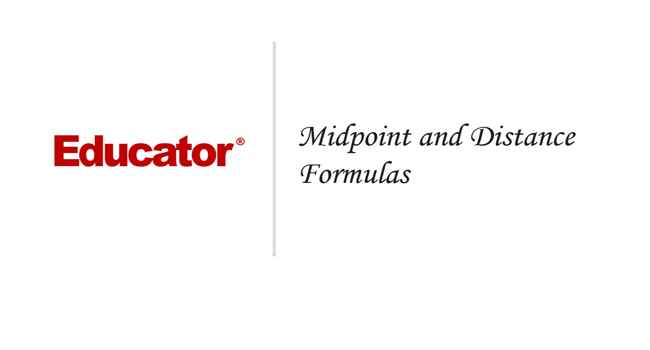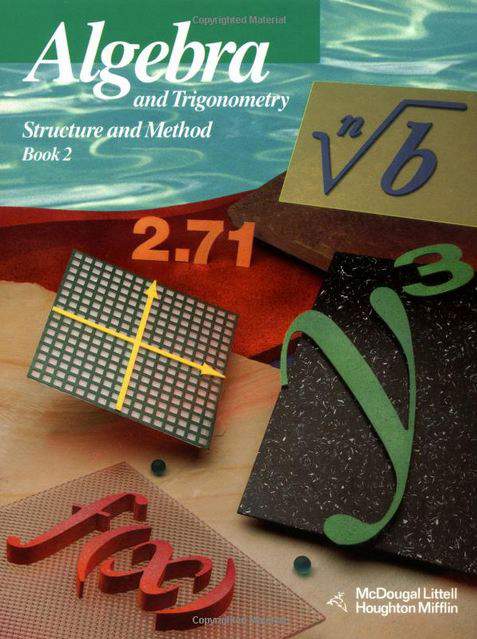Connecting...

This is a quick preview of the lesson. For full access, please Log In or Sign up.
For more information, please see full course syllabus of Algebra 2
For more information, please see full course syllabus of Algebra 2
Algebra 2 Midpoint and Distance Formulas
Lecture Description
The order of the x coordinates in the distance formula does not matter, so take whichever difference is easier to compute. The same comment applies to the y coordinates. After squaring the differences in the distance formula, be sure to take the positive square root of their sum. In the examples, you'll practice these two formulas by finding the length of the median of a triangle, and by finding the perimeter and area of a triangle. Make sure that you know and understand how to use both midpoint and distance formulae, as they will be used in a lot of later work.
Bookmark & Share
Embed
Share this knowledge with your friends!
Copy & Paste this embed code into your website’s HTML
Please ensure that your website editor is in text mode when you paste the code.(In Wordpress, the mode button is on the top right corner.)
×
Since this lesson is not free, only the preview will appear on your website.
- - Allow users to view the embedded video in full-size.
Next Lecture
Previous Lecture









































 Carleen Eaton
Carleen Eaton Grant Fraser
Grant Fraser
 Answer Engine
Answer Engine



2 answers
Last reply by: Matthew Deng
Sat Jul 25, 2020 6:26 PM
Post by julius mogyorossy on March 26, 2014
Forget what I said above, Dr. Carleen did not leave out a factor, 2, I apologize to Dr. Carleen, and to my fellow Educators. My head is really messed up right now, PTSD, but every now and then I get a sense of the God I shall be, it is so awesome, I wish I could record that state of mind on a DVD, and let you experience it.
0 answers
Post by julius mogyorossy on March 24, 2014
It seems Dr. Carleen left out a factor, 2, when finding the distance for the second example, in the first term of the first term, when she simplifies before squaring the two terms under the radical, but don't even take my word for it, I have bad PTSD, very stressed out, can't wait to be perfect soon and then take the Algebra Clep test. I so love, solving, writing equations, on my tablet.
1 answer
Wed Nov 2, 2011 9:20 PM
Post by Jonathan Taylor on October 30, 2011
1st example of distance formula 9+25 is not 36 it was 34 so the square root shold have been 34
1 answer
Wed Nov 2, 2011 9:17 PM
Post by Jonathan Taylor on October 25, 2011
I did not understand this question did u do the example as shown are did u make up a example
2 answers
Thu Oct 13, 2011 9:05 PM
Post by Manuela Fridman on October 6, 2011
I found 2 minor mistake in this video that I think should be corrected and reposted. The 1st one: in "example:distance" Dr. Eaton put the answer was 6. I believe that is incorrect because sq root 9+25= sq root 34 not 36 as Dr. Eaton put. Therefore the answer would be 5.83. The 2nd thing, i'm not sure if this makes a difference in the overall answer but in the "example 2:midpoint and" section Dr Eaton says to first put "y2" first but actually rights it using the "x2". It made it a little confusing, but of course i realized it was just a simple mistake. Thank you very much for all of your help though! Dr Eaton and the rest of the tutors are great! Just wish i was able to sign up for the year long membership without having to pay upfront for all the classes. $35 is a little high every month.